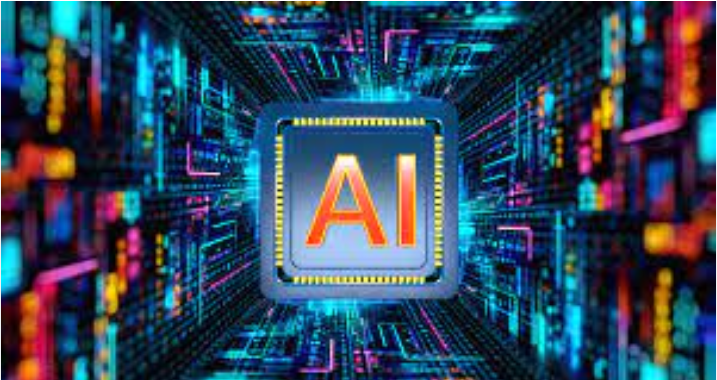
If there was any doubt, the generative AI bubble did not burst in 2024.
Investments in generative AI, which encompasses a range of AI-powered apps, tools, and services to generate text, images, videos, speech, music, and more, reached new heights last year. According to data from financial tracker PitchBook compiled for TechCrunch, generative AI companies worldwide raised $56 billion from VCs in 2024 across 885 deals.
That raw cash total is a new record for the segment. It’s up 192% from 2023, when investors poured $29.1 billion into generative AI startups across 691 deals.
“We aren’t seeing a slowdown in generative AI funding, as big names like OpenAI, Anthropic, and xAI continue to secure major raises and release new, competitive products,” said Ali Javaheri, an emerging technology analyst at PitchBook, in an interview.
Deal value in Q4 2024 soared to $31.1 billion with the closure of mammoth rounds like Databricks’ $10 billion Series J, xAI’s $6 billion Series C, Anthropic’s $4 billion strategic investment from Amazon, and OpenAI’s $6.6 billion round.
Mergers and acquisitions were a small share of generative AI investments in 2024: $951 million, per PitchBook data. To be clear, that’s exclusive of the various “acqui-hire” deals executed by Google, Microsoft, and Amazon. Google reportedly paid $2.7 billion to hire much of chatbot startup Character AI‘s staff and license its technology, while Microsoft is said to have spent $650 million licensing Inflection‘s AI models and hiring its CEO, Mustafa Suleyman.
U.S. companies attracted the bulk of generative AI backing last year. Startups outside the U.S. nabbed just $6.2 billion of all 2024 VC investments in the market. There were some big winners, however, like Beijing-based Moonshot AI ($1 billion in February), French startup Mistral (~$640 million in June), Cologne-based company DeepL ($300 million in May), Shanghainese firm MiniMax ($600 million in March), and Tokyo-based Sakana AI (~$214 million in September).
So what might 2025 hold?
Javaheri believes that the generative AI sector risks becoming oversaturated with startups in exceedingly similar (or even identical) verticals. To his point, no fewer than four companies developing AI coding assistants — Augment, Magic, Codeium, and Poolside — closed rounds exceeding $100 million last year. And a host of generative media startups (e.g., Black Forest Labs, ElevenLabs) have recently secured tens of millions of dollars in funding at sky-high valuations.
The trend may not be sustainable as investor pressure to show appreciable revenue growth increases.
According to Javaheri, technical challenges and the vast computing costs needed to stay competitive may pose additional challenges for generative AI ventures. “Only the best-funded startups can continue to keep up with the pace needed for the most innovative models,” he added. “Most of the high valuations are thus going to come from the infrastructure layer.”
That is, of course, very good news for “infrastructure layer” generative AI players, which did quite well for themselves in 2024. Data center startups like Crusoe ($600 million in December) and Lambda ($320 million in February) represented some of the generative AI market’s largest rounds.
The year 2024 was a watershed moment for generative artificial intelligence (AI), with funding for this emerging technology reaching unprecedented levels. According to a recent report, generative AI funding surged to new heights in 2024, with investors pouring billions of dollars into startups and research initiatives focused on developing and applying this transformative technology.
Background: The Rise of Generative AI
Generative AI refers to a subset of AI technologies that enable machines to generate new, original content, such as images, videos, music, and text. This technology has been gaining traction in recent years, driven by advances in deep learning, neural networks, and natural language processing.
Generative AI Funding: A Record-Breaking Year
In 2024, generative AI funding reached an all-time high, with investors committing a staggering $10.3 billion to startups and research initiatives focused on this technology. This represents a significant increase from 2023, when generative AI funding totaled $4.2 billion.
Breakdown of Generative AI Funding in 2024
The $10.3 billion in generative AI funding in 2024 was distributed across various categories, including:
1. Computer Vision: $3.5 billion (34% of total funding)
2. Natural Language Processing: $2.8 billion (27% of total funding)
3. Music and Audio Generation: $1.4 billion (14% of total funding)
4. Text Generation: $1.2 billion (12% of total funding)
5. Other Applications: $1.4 billion (14% of total funding)
Top Generative AI Startups and Research Initiatives
Some of the top generative AI startups and research initiatives that received funding in 2024 include:
1. DALL-E: A generative AI model developed by OpenAI that can generate highly realistic images from text prompts.
2. Stability AI: A UK-based startup that developed a generative AI model that can generate high-quality images and videos.
3. AIVA: A French startup that developed a generative AI model that can compose original music.
4. Google’s Imagen: A generative AI model developed by Google that can generate highly realistic images from text prompts.
Implications of Generative AI Funding in 2024
The record-breaking funding for generative AI in 2024 has significant implications for the future of this technology. Some of the key implications include:
1. Accelerated Innovation: The influx of funding will accelerate innovation in generative AI, leading to the development of more sophisticated models and applications.
2. Increased Adoption: The growing availability of generative AI models and applications will lead to increased adoption across various industries, including art, music, film, and gaming.
3. New Business Models: The development of generative AI will enable new business models, such as AI-generated content creation, AI-powered advertising, and AI-driven product design.
4. Ethical Concerns: The growing use of generative AI raises ethical concerns, such as the potential for AI-generated content to be used for malicious purposes, like deepfakes and disinformation.
Conclusion
The record-breaking funding for generative AI in 2024 marks a significant milestone in the development of this transformative technology. As generative AI continues to advance and mature, we can expect to see new and innovative applications across various industries. However, it is essential to address the ethical concerns surrounding generative AI to ensure that this technology is developed and used responsibly.
The record-breaking funding for generative artificial intelligence (AI) in 2024 has numerous benefits for the development and adoption of this transformative technology. Here are some of the key advantages:
Benefits for the AI Industry
1. Accelerated Innovation: The influx of funding will accelerate innovation in generative AI, leading to the development of more sophisticated models and applications.
2. Increased Adoption: The growing availability of generative AI models and applications will lead to increased adoption across various industries, including art, music, film, and gaming.
3. New Business Models: The development of generative AI will enable new business models, such as AI-generated content creation, AI-powered advertising, and AI-driven product design.
4. Job Creation and Economic Growth: The growth of the generative AI industry will create new job opportunities and drive economic growth.
Benefits for Businesses and Organizations
1. Improved Efficiency and Productivity: Generative AI can automate repetitive tasks, freeing up human resources for more creative and strategic work.
2. Enhanced Customer Experience: Generative AI can be used to create personalized content, such as product recommendations, chatbots, and virtual assistants.
3. Increased Competitiveness: Businesses that adopt generative AI can gain a competitive edge in their respective markets.
4. New Revenue Streams: Generative AI can enable new revenue streams, such as AI-generated content licensing and AI-powered advertising.
Benefits for Society and Individuals
1. Improved Access to Creative Tools: Generative AI can democratize access to creative tools, enabling more people to create and express themselves.
2. Enhanced Education and Learning: Generative AI can be used to create personalized educational content, such as interactive simulations and adaptive learning systems.
3. Increased Accessibility: Generative AI can be used to create assistive technologies, such as AI-powered wheelchairs and AI-driven prosthetics.
4. New Forms of Art and Entertainment: Generative AI can enable new forms of art and entertainment, such as AI-generated music, AI-created films, and AI-driven video games.
Benefits for the Environment and Sustainability
1. Reduced Carbon Footprint: Generative AI can be used to optimize energy consumption and reduce carbon emissions in various industries.
2. Improved Resource Allocation: Generative AI can be used to optimize resource allocation, reducing waste and improving efficiency.
3. Enhanced Sustainability: Generative AI can be used to develop sustainable solutions, such as AI-powered climate modeling and AI-driven sustainable agriculture.
Conclusion
The record-breaking funding for generative AI in 2024 has numerous benefits for the development and adoption of this transformative technology. From accelerated innovation and increased adoption to improved efficiency and productivity, generative AI has the potential to drive significant positive change across various industries and aspects of society.



